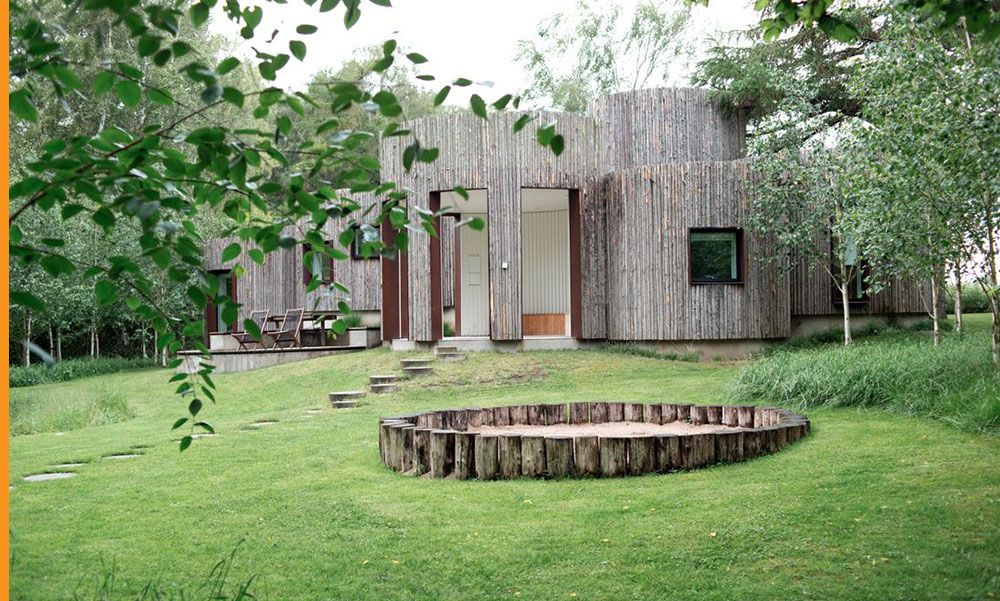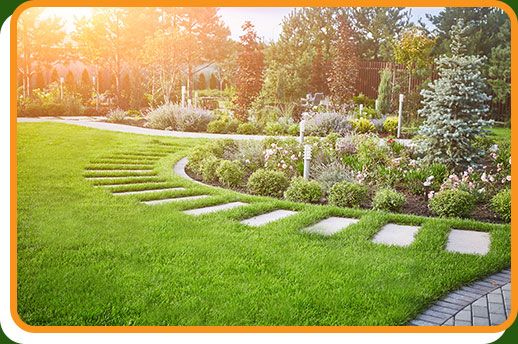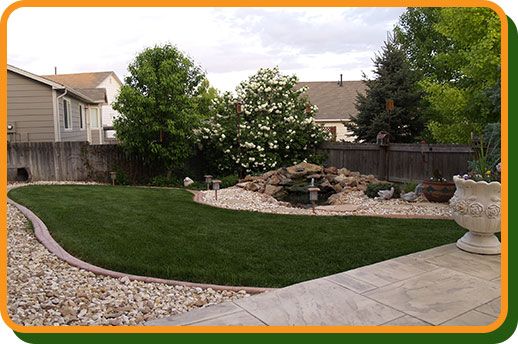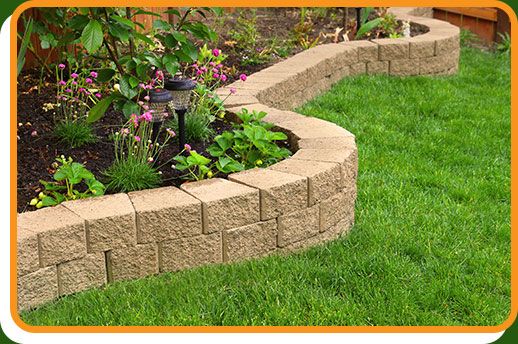
Guide to Edging Around Trees & Mulch Beds
When you’re driving around your neighborhood and you see someone’s yard or landscape that has been professionally maintained, you may find yourself wondering what it is that makes it look so clean and appealing. You may have the same trees, design, plants, etc. but somehow, something is still different. What that detail might be is EDGING.
Edging around trees and your garden helps to give a landscape a controlled, clean-looking appearance. It may seem small, but it actually is one of the fine details that can take the beauty and comfort of your landscape to the next level. If you want to make your property look tidier, read this guide and get all the tips and tricks you’ll need to start edging your property with skill and precision. However, if you’re not much into landscaping or if you would simply prefer to let professional arborists get the job done for you, reach out to Wise Oak, Inc. of Southern Vermont and we can take care of your yard’s edging for you. What’s more, we also offer related services, like landscape design, maintenance, and installation. Reach out to us today to schedule your free consultation!

The Benefits of Edging
Creating edges around all your trees, plants, and gardens is not only aesthetically appealing, but it also has some practical benefits:
It keeps mulch from rolling out of your treescape or flower beds and into your yard
It creates a barrier to block the spread of weeds and other nuisance plants
It creates structure and can help you plan and develop your landscape more precisely

Tips for Creating Edges Around Mulch Beds
Mulch beds are the areas of mulch around trees and gardens, creating a barrier between those sections and the rest of your yard. When it comes to edging around trees or your garden, the simplest option is to do spade cutting, where you simply dig a small, narrow trench around the outside of the bed with a spade.

Other types of edging barriers include:
Wood edging — This type of edging is where you lay down wood to function as a barrier between sections. Both round logs and flat boards are common with this type of edging. Wood is both durable and affordable, not to mention that it looks great and natural. The most common types of wood for edging are redwood, cypress, and cedar, as they are slow to rot.
Strip edging — This is a type of edging that consists of a barrier that has been anchored into the ground and with the top part slightly visible, sectioning off the desired areas. This type of edging is best for creating curves and is available in both metal and plastic.
Masonry edging — Of the types mentioned, masonry edging is the most expensive, as it is made with bricks, stone, or concrete. Stone is an attractive material that is easy to install, so is an excellent choice for edging your yard.
How to Edge Around Garden Beds
The most common approach to edging around garden beds is with spade-cut edging, as it is simple and effective. Here’s a brief overview of how to do it:
Use a spade to slice into the turf and outline the entire bed
Go back through and slice at an angle into the turf to sever the grass
Remove all the clods of grass and create a V-shaped trench
Add extra edging material like wood, concrete, plastic, etc. for extra support or for decoration
The biggest problem with spade-duct edging however is that it doesn’t last all that long — you’ll end up having to periodically redig it to ensure that it remains effective. That’s why adding other materials like wood or metal can be more appropriate in some cases, as they last a lot longer. However, stone can crack, plastic can be unreliable, and wood can rot — so there is no truly permanent solution. The only true permanent solution is to get it maintained regularly by professionals. That’s where Wise Oaks comes in. Our team has been landscaping, taking care of trees, doing snow removal, and more in Southern Vermont since 2006. We pride ourselves on offering the most reliable, affordable, and professional landscaping services in the region. Contact us today to schedule your free consultation!
Guide to Edging & Mulching Around Trees
There are so many great benefits to mulching around trees. Not only do they insulate the soil, protecting it from both overly hot and overly cold weather, it also helps retain water and keep your trees’ roots moist. It even helps reduce weed growth, meaning less having to bend over or get on your knees and pulling out all sorts of tough plants that absorb the water you want your trees to soak up. With all these benefits, it makes sense to want to keep your mulch staying under your trees instead of falling out into the yard. What is more, it starts to look bad when that occurs. So, how do you mulch properly around a tree?
Remove all the grass around the base of the tree within a 3 ft radius, cutting down 2 to 4 inches deep
Don’t force a section that is giving you resistance — it might be a tree root!
After removing the grass, apply the mulch in the 2 to 4 inch hole indentation that you’ve created, leaving some space around the trunk
Edge around the outside of th mulch to create a solid barrier to keep it from falling off into the yard
Don’t Do These Things When Edging Your Landscape
The main mistake that people make when edging their yards is not being properly prepared. They then may start digging a trench in one area and then realize they need to move in four more feet away. That’s why, we recommend planning properly and making sure you have all the necessary tools to get the job done right from the beginning.
Another common mistake is people not budgeting properly. Edging material is sold by the foot, so make sure to measure out how much you will need so you don’t end up buying too much or spending more than you need to on material. Your budget will also help you decide which material to use.
Lastly, people often fail to prepare the soil properly for deterring weeds. Using anti-weed sprays, or at least pulling up all the existing weeds before mulching and edging is very important for deterring further weed growth.
Get Your Garden Edged by a Professional
Now that you’ve read this guide, you should be feeling a bit more confident about edging your landscape by yourself. However, if you’re thinking you’re not up for it or if you want to make sure the job gets done right the first time, hiring professional landscapers is a smart choice. If you are in Southern Vermont, reach out to Wise Oak, Inc. and we can get started on your edging project pronto. We will be able to guide you from initial conception, through budgeting and planning, and to achieving the final results you’re looking for. When it comes to clean, professional-looking gardens and landscaping, edging is a subtle thing, but it makes a massive difference. Get your garden, trees, or other parts of your landscape edged by Wise Oak today!
